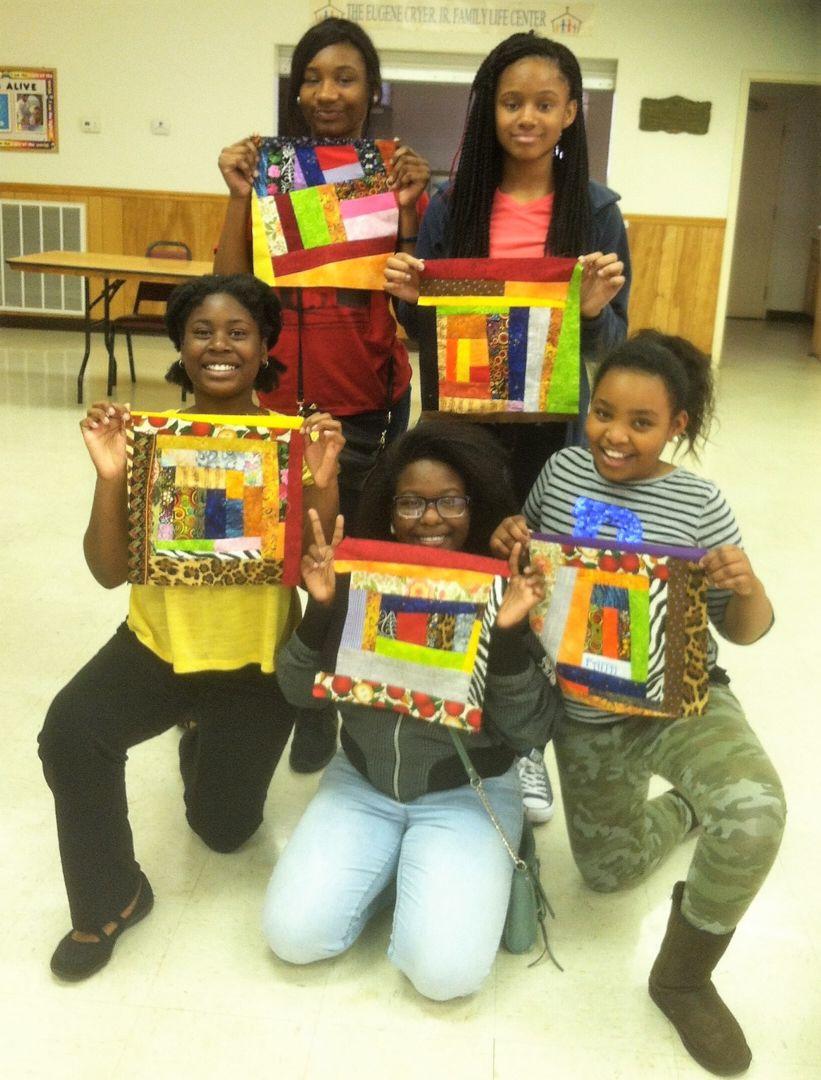On any given day, if the urge is there, Lillie Fowler Singleton finds time to exercise her artistic craft.
The youngest of 14 siblings, Singleton grew up in a small town called Oakfield, Georgia. At 8 years old, she learned the art of sewing, quickly picking up the skill from family members. “I watched my mom, grandma and great-aunt sew. My mom always quilted,” she said.
Singleton first stitched simple blocks, but her dedication to the art inspired her to pursue a home economics degree from Fort Valley State College.
Taking her personal sewing machine, Singleton made clothes for herself and other students on campus. “During that time, we had to do the best we could to make a little money,” she said. As an underclassman, Singleton also had the honor of sewing uniforms for the FVSC marching band’s majorettes. “They were gold tuxedoes,” she recalled.
After graduating in 1975, Singleton decided to share her craft by becoming a home economics teacher. Unable to find a teaching job in her hometown area, she followed her sister to South Carolina.
“My sister also majored in home economics and graduated from FVSC,” Singleton said. “She was working in South Carolina and informed me of a job availability in the area that she lived.” For 30 years, Singleton taught middle and high school students in the Colleton County School District in Walterboro, South Carolina.
“The kids looked forward to getting in my class to make their own quilts,” she said. She noted some of her former students still have their quilts as adults. Retired since 2005, Singleton said sewing is almost a lost art.
“A lot of schools have taken out sewing. I have always felt like home economics was the course that you could incorporate other subjects,” she said. “Something my mom always said was, ‘If you can do something with your hands, you’ll never go hungry.’ That is so true.”

Although Singleton is retired, she continues to work with the youth. As a member of St. Peter’s African Methodist Episcopal (AME) Church, she teaches the girls in her youth group how to sew and conducts workshops during the summer.
In addition to helping the youth, Singleton is a member of a quilting club called the Lowcountry Scrap Quilters. Members, consisting of 20 women in the South Carolina area, teach other women how to sew and participate in community service sewing.
The group donates handmade quilts and clothes to organizations such as Threads of Love for premature babies, the Department of Social Services for children in foster care and the Quilts of Valor Foundation for service members and veterans. Other donations include projects for the homeless and pillowcase dresses for little girls in Africa.
“We enjoy doing those things. It’s good to feel like you’re contributing to the community,” said Singleton, who is also a member of Quilters of South Carolina.
In an effort to evolve her work, Singleton is learning complex quilting skills. Her artwork has grown to include pictures celebrating African-American history such as Dr. Martin Luther King Jr., a woman picking a bail of cotton and the Gullah prayer. She also paid tribute to the nine victims of the 2015 shooting at the Emanuel AME Church in Charleston, South Carolina. She plans to donate the quilt to Charleston’s new International African American Museum.
Furthermore, Singleton makes quilts for family members and interested buyers. Every year, she displays some of her artwork in churches, museums, shows and the Colleton County Memorial Library.
“Quilts are an important part of history,”
– Lillie Fowler Singleton
Proud of her family heritage, she has a piece of an old quilt that her grandmother, who was born in the 1800s, made. “I’m in awe that I have something my grandmother made,” Singleton said.
However, she said her favorite is a blue and white quilt that her mother made.
“That was the last quilt that she quilted for me. It is simple, but her hands worked on that quilt. I have the memory of her,” she said. Singleton said she wishes more people would take up quilting. “It’s therapeutic,” she remarked.
Singleton, who uses both her hands and sewing machine, takes pride in making her work look good and prefers to use 100 percent cotton.
“My work represents me. A person who understands what quilting is knows the work, the time and the money that goes into a good quilt. I want families to pass it down from generation to generation,” she said. “It makes you feel good to know you created something.”

